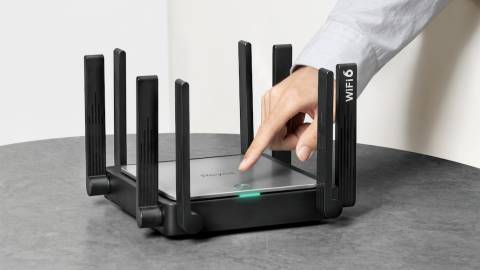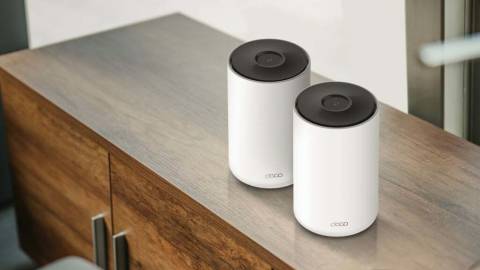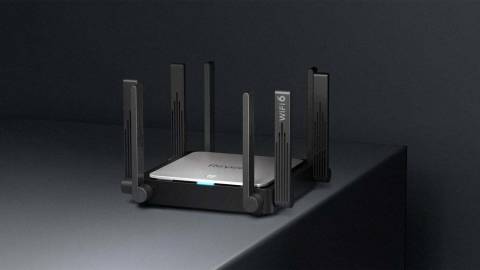Wi-Fi 6 (otherwise known as 802.11ax) brings faster throughput speeds, better battery life, and less bandwidth congestion than what you get with Wi-Fi 5 (802.11ac) technology. Nowadays, it's easy to find a wealth of router and client devices at all prices that harness Wi-Fi 6's powerful wireless networking potential. But let's run through some important things to consider before you run out and buy a Wi-Fi 6 router.

All the Wi-Fi 6 Terms You Need to Know

Wi-Fi 6 routers employ several new technologies that are designed to boost overall performance by offering increased throughput speeds. Theoretically, Wi-Fi 6 can transfer data at up to 10Gbps, compared with max speeds of around 3.5Gbps for 802.11ac. In addition, Wi-Fi 6 aims to relieve network congestion, provide greater client capacity, and reduce client power consumption.

To make all this possible, many behind-the scenes improvements were made over previous generations of Wi-Fi. Among them is Orthogonal Frequency-Division Multiple Access (OFDMA) modulation, which allows up to 30 clients to share a channel at the same time, thereby improving efficiency by boosting overall capacity while reducing latency. Long story short, OFDMA assigns time intervals to clients that allows them to better parse out available network channels. If one person in your home is streaming a movie and another is checking social media on a phone, OFDMA allows a router to assign channels to each device based on when it needs it most.
Wi-Fi 6 also uses Target Wake Time (TWT), which allows devices to determine when they will normally wake up to begin sending and receiving data. This extends the battery life of mobile devices such as smartphones and tablets, as well as battery-powered smart home devices such as security cameras and video doorbells. The new standard also takes advantage of previously unused radio frequencies to provide faster 2.4GHz performance, and it uses refined bandwidth management to provide enhanced Quality of Service (QoS) options.
Finally, Wi-Fi 6 offers eight-stream uplink and downlink Multi-User Multiple Input Multiple Output (MU-MIMO), which streams data simultaneously rather than sequentially, allowing a more equitable sharing of bandwidth among connected MU-MIMO enabled clients. Wi-Fi 5 MU-MIMO topped out at four streams.
Should You Upgrade to Wi-Fi 6 Now?
The short answer is likely yes if your current router is more than three years old. Nearly all new consumer devices, from notebooks to tablets, support Wi-Fi 6. Even if your devices are still operating on 802.11ac, it's worth the trouble to consider a Wi-Fi 6 router upgrade now. Prices are coming down on both standalone Wi-Fi 6 routers as well as Wi-Fi-6-compatible wireless mesh systems that provide wall-to-wall coverage for homes of all sizes. Among the latter, the TP-Link Deco X20 is an affordable three-piece Wi-Fi 6 mesh system designed for homes of up to 5,800 square feet. It's around $200 less than many alternatives, which lets it qualify—almost—as a budget router. At the higher end of the spectrum is the Asus ZenWiFi AX (XT8), one of the best-performing mesh options we've tested.
Meanwhile, adding a Wi-Fi 6 range extender could be an alternative if you're happy with your existing Wi-Fi 6 router but have a larger home or live in a dense neighborhood with lots of competing wireless signals.
The Best Wi-Fi 6 Range Extenders We've Tested
TP-Link AX1750 Wi-Fi 6 Range Extender (RE603X) Review
4.0 Excellent $99.99 at Newegg See It (Opens in a new window)Netgear AX1800 Wi-Fi 6 Mesh Extender (EAX15) Review
3.5 Good $109.00 at Amazon See It (Opens in a new window)TP-Link AX1500 Wi-Fi 6 Range Extender (RE505X) Review
3.5 Good $69.99 at Amazon See It (Opens in a new window)The Wi-Fi Alliance started certifying Wi-Fi 6 devices in 2019, and since then devices and routers have become plentiful and reasonably priced. The advanced connectivity features delivered in these devices make them significantly superior to Wi-Fi 5, so if an upgrade is in your budget, now is definitely a good time to pull the trigger.
Is Wi-Fi 6 Secure?
Aside from the capabilities mentioned above, Wi-Fi 6 also offers features like beamforming, which transmits Wi-Fi signals directly to clients rather than over a broad spectrum. All Wi-Fi 6 devices can also handle WPA3 encryption, which is the newest iteration of Wi-Fi security. It offers robust password protection and 256-bit encryption algorithms to make it harder for people to hack into your network.
Your network will also run faster due to background networking improvements, like support for 1,024-QAM (Quadrature Amplitude Modulation), a method that allows more data to be packed into each signal for increased throughput. This can deliver up to 25% more capacity than the 256-QAM method used in most Wi-Fi 5 routers.
Is Wi-Fi 6 Backward Compatible?
All this jargon is a lot to unpack, but rest assured that any device you get that supports the Wi-Fi 6 standard will have all these features in place. On the other hand, some Wi-Fi 6 devices with enhanced capabilities go beyond the basic features that the Wi-Fi Alliance certified. Called Wi-Fi 6E, these products support 6GHz wireless spectrum. Essentially, this means Wi-Fi 6E enables faster speeds and lower latencies than Wi-Fi 6 and earlier iterations.
Both Wi-Fi 6 and Wi-Fi 6E devices are backward compatible with earlier Wi-Fi standards, but in order to use the new 6GHz channels, you'll need a Wi-Fi 6E router and a Wi-Fi 6E client device (meaning computers, phones, smart home devices, and other gadgets that support Wi-Fi 6E). That means even if you have a relatively new Wi-Fi 6 router, you'll still need to upgrade to a Wi-Fi 6E model in the future if you want to leverage 6E's benefits.
The Top Wi-Fi 6 Routers We've Tested
TP-Link Archer AX50 (AX3000) Dual Band Gigabit Wi-Fi 6 Router Review
4.0 Excellent $99.00 at Walmart See It (Opens in a new window)Asus ROG Rapture GT-AX6000 Review
4.5 Outstanding $372.99 at Amazon See It (Opens in a new window)Netgear Nighthawk Tri-Band Wi-Fi 6E Router (RAXE500) Review
4.0 Excellent $459.05 at Amazon See It (Opens in a new window)TP-Link Archer AX11000 Next-Gen Tri-Band Gaming Router Review
4.5 Outstanding $214.99 at Amazon See It (Opens in a new window)Asus ZenWiFi ET8 Review
4.5 Outstanding $472.00 at Amazon See It (Opens in a new window) See all (5 items)Getting to Wi-Fi 6, One Upgrade at a Time
If you're panicking at the number of network and client devices you need to upgrade, relax. There's no need to replace every Wi-Fi 5 device and network component simultaneously. Wi-Fi 6 routers support Wi-Fi 5 devices just fine. The latter will just run at their rated 802.11ac speeds. Similarly, Wi-Fi 6 devices can still talk to a Wi-Fi 5 router, though again, their throughput will be constrained and most of the advanced features mentioned above will be disabled until they can find supporting devices. If you're a gamer, you might start with a Wi-Fi 6 or 6E gaming router and then consider a Wi-Fi 6-capable laptop or desktop for your next gaming rig. If, perhaps, work dictates certain high-performance clients, you can start there and upgrade your personal gadgets later.
Bottom line: You can upgrade to Wi-Fi 6 one step at a time, which will definitely make things easier. You'll not only save your wallet from a sudden pummeling, you'll also be able to configure and master one device at a time instead of finding yourself buried in a whole avalanche of new features and documentation.
Should I Just Wait for Wi-Fi 7?
Short answer? Probably not. At the time of this update, the first consumer Wi-Fi 7 routers had just been announced, and they were quite expensive, Seeing as some Wi-Fi 6 budget-model routers have come down into the under-$100 zone, there's no need to wait to gain speed. A Wi-Fi 6 or 6E model now will give you years of service while you wait for Wi-Fi 7 routers to come down in price, and for Wi-Fi 7 clients to proliferate. (We haven't seen a Wi-Fi 7-capable laptop or desktop PC...yet.) In short, while for now you should check out our explainer on the benefits of Wi-Fi 7 to get up to speed, don't plan on jumping into actual 7 hardware for a while.
